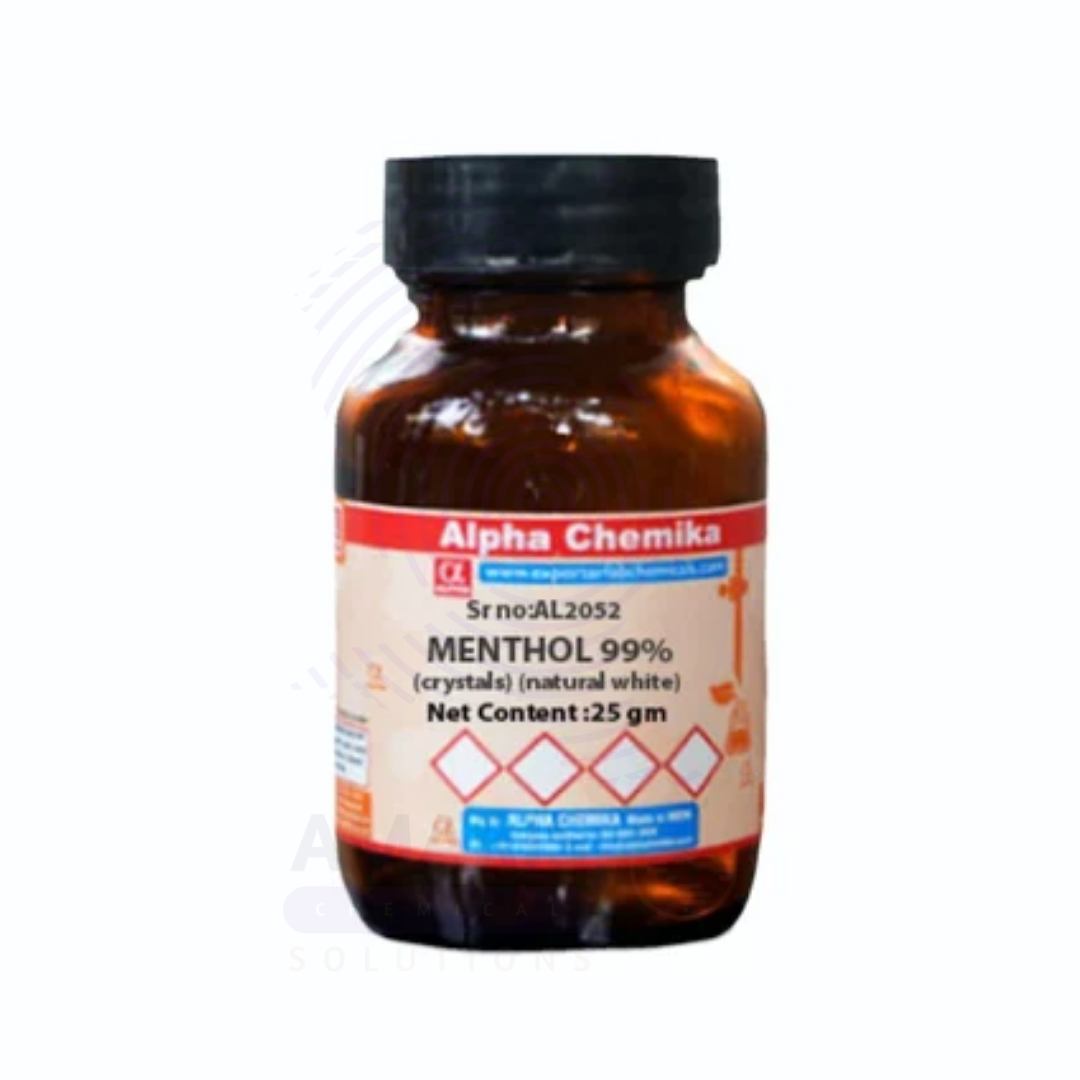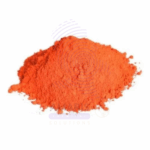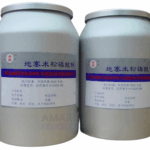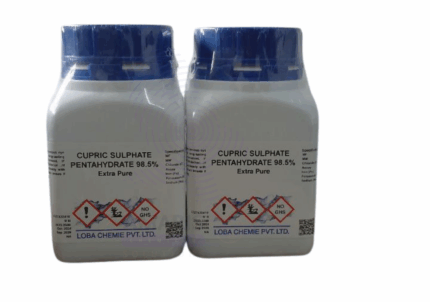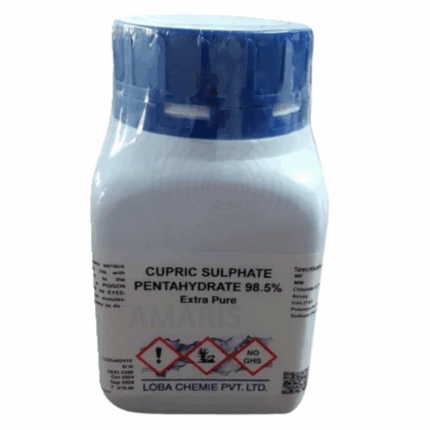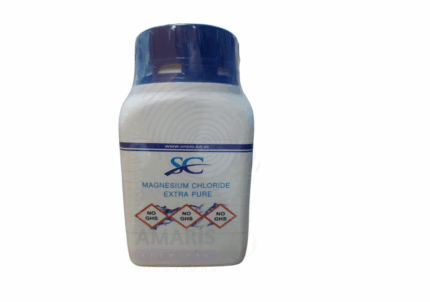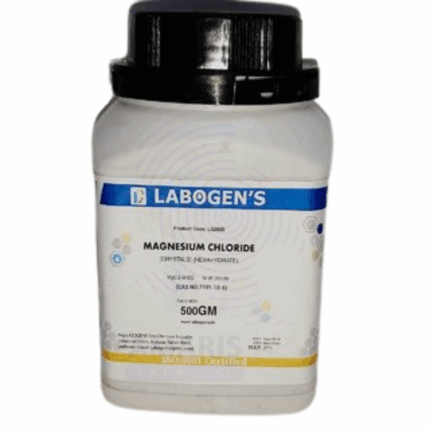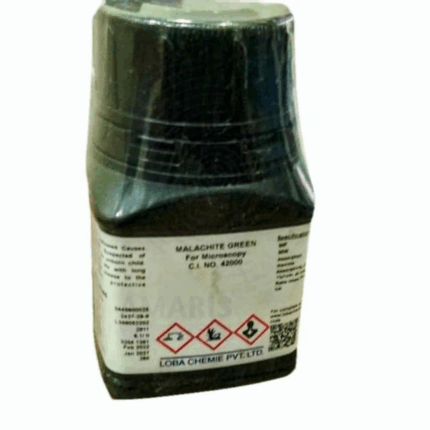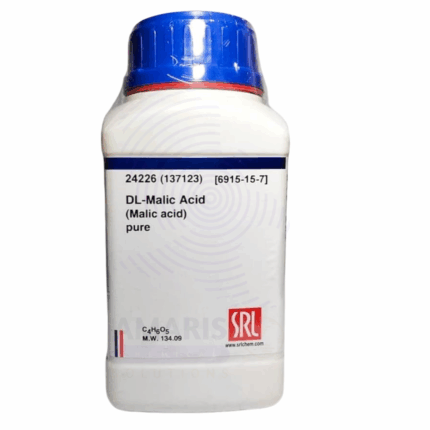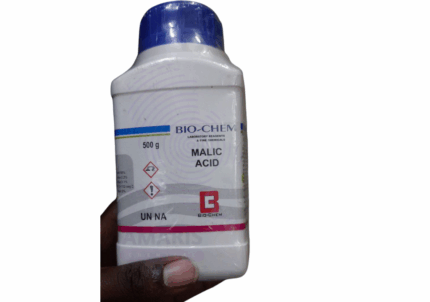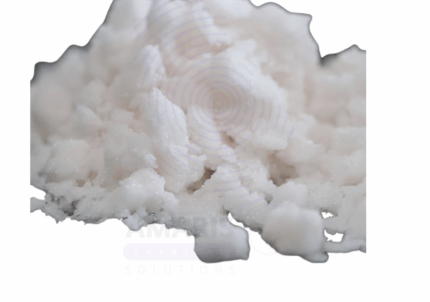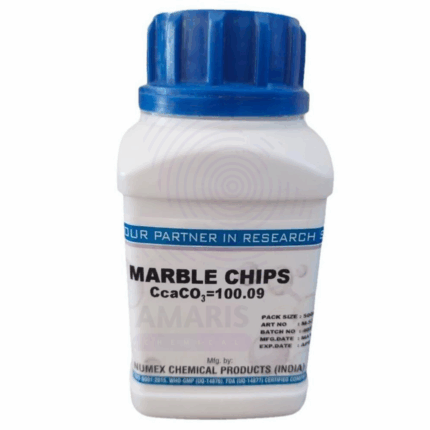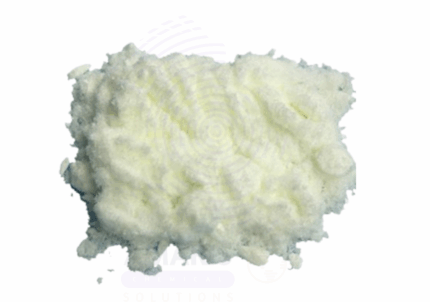Menthol Crystals Extra Pure
$ 13.82 Original price was: $ 13.82.$ 13.76Current price is: $ 13.76.
Menthol Crystals Extra Pure are colorless to white, needle-like crystals derived from peppermint or other mint oils and refined to the highest purity. Known for their strong, refreshing minty aroma, they are widely used in pharmaceutical, cosmetic, and personal care formulations. These crystals provide a cooling sensation on the skin and mucous membranes, making them a common ingredient in balms, liniments, throat lozenges, and inhalants. In laboratories, menthol crystals are also used in sensory studies and product development. Their purity ensures consistent performance and minimal interference in sensitive formulations.
Menthol Crystals Extra Pure
Primary Uses
- Standard in Sensory and Olfactory Studies:
- Used in research involving olfactory receptors, cooling sensation studies, and neurological responses to aromatic compounds.
- Pharmaceutical Formulation Research:
- Commonly employed in experimental drug formulation (ointments, lozenges, creams) for studying local anesthetic and decongestant properties.
Secondary Uses
- Solubility and Crystallization Studies:
- Used to demonstrate principles of sublimation, solubility, and crystal structure in organic compounds.
- Flavor and Fragrance Development:
- Evaluated in analytical chemistry labs for composition, purity, and behavior in flavor/fragrance formulation trials.
- Chemical Reaction Demonstration:
- Occasionally used to study reactions of terpenoids and alcohol functional groups in organic chemistry labs.
| PACK SIZE |
100 grams Plastic Tin |
|---|
1. Basic Identification Attributes
- Chemical Name: Menthol
- CAS Number: 89-78-1
- Molecular Formula: C₁₀H₂₀O
- Molecular Weight: 156.27 g/mol
- Appearance: White or colorless needle-like crystals
- Odor: Strong minty aroma
- Grade: Extra Pure
- Solubility: Slightly soluble in water; soluble in alcohol, ether, and oils
- Melting Point: ~41–44 °C
- Boiling Point: ~212 °C
2. Safety & Hazard Attributes
- GHS Classification:
- Eye irritation (Category 2)
- Skin irritation (Category 2)
- Specific target organ toxicity – single exposure (Category 3)
- Hazard Statements:
- H315: Causes skin irritation
- H319: Causes serious eye irritation
- H335: May cause respiratory irritation
- Precautionary Statements:
- P261: Avoid breathing dust
- P280: Wear protective gloves/eye protection
- P305+P351+P338: IF IN EYES: Rinse cautiously with water
- P304+P340: IF INHALED: Remove person to fresh air
- Personal Protective Equipment (PPE):
- Lab coat
- Nitrile gloves
- Safety goggles
- Dust mask if powder is airborne
- First Aid Measures:
- Inhalation: Remove to fresh air; seek medical attention if irritation persists
- Skin Contact: Wash with soap and water
- Eye Contact: Rinse with water for several minutes
- Ingestion: Rinse mouth; seek medical advice
- Fire Hazards:
- Flammable solid
- Emits irritating fumes when burned
- Use water spray, foam, dry chemical, or CO₂ for extinguishing
3. Storage & Handling Attributes
- Storage Conditions:
- Store in a cool, dry, and well-ventilated area
- Keep tightly sealed and away from ignition sources
- Protect from moisture and light
- Handling Tips:
- Handle in fume hood if dust is present
- Avoid inhalation of vapors or contact with eyes and skin
4. Laboratory Applications
- Primary Uses:
- Flavoring and fragrance experiments
- Solubility and crystallization demonstrations
- Cooling agent in sensory and pharmaceutical studies
- Secondary Uses:
- Inhalation studies in pharmacology
- Aroma compound in biochemistry experiments
- Model compound for organic compound extraction and purification
SAFETY PRECAUTIONS
Personal Protective Equipment (PPE):
- Wear a lab coat, nitrile gloves, and chemical splash goggles.
- Use in a well-ventilated area or under a fume hood.
Handling:
- Avoid inhalation, ingestion, and contact with skin or eyes.
- Handle with dry, clean tools to prevent contamination.
- Wash hands thoroughly after handling.
Storage:
- Store in a cool, dry, and well-ventilated area.
- Keep the container tightly closed and away from heat sources.
- Protect from direct sunlight and moisture.
FIRST AID MEASURES
Inhalation:
- Remove the person to fresh air.
- Seek medical advice if symptoms like coughing or dizziness occur.
Skin Contact:
- Wash affected area with soap and water.
- Seek medical attention if irritation persists.
Eye Contact:
- Rinse immediately with plenty of water for several minutes.
- Remove contact lenses if present and easy to do.
- Continue rinsing and seek medical attention if irritation continues.
Ingestion:
- Rinse mouth with water.
- Do not induce vomiting.
- Seek medical attention immediately.
FIRE FIGHTING MEASURES
Flammability:
- Flammable solid. May emit irritating fumes when burned.
Extinguishing Media:
- Use dry chemical, CO₂, or alcohol-resistant foam.
- Avoid using water in large quantities.
Hazardous Combustion Products:
- May release carbon monoxide (CO) and carbon dioxide (CO₂).
Firefighter Protection:
- Wear self-contained breathing apparatus (SCBA) and full protective gear when fighting fire.


 Preservatives(food)
Preservatives(food) Flavor Enhancers
Flavor Enhancers Acidulants
Acidulants Sweeteners
Sweeteners Antioxidants
Antioxidants Colorants(food)
Colorants(food) Nutraceutical Ingredients (food)
Nutraceutical Ingredients (food) Nutrient Supplements
Nutrient Supplements Emulsifiers
Emulsifiers
 Collectors
Collectors Dust Suppressants
Dust Suppressants Explosives and Blasting Agents
Explosives and Blasting Agents Flocculants and Coagulants
Flocculants and Coagulants Frothers
Frothers Leaching Agents
Leaching Agents pH Modifiers
pH Modifiers Precious Metal Extraction Agents
Precious Metal Extraction Agents
 Antioxidants(plastic)
Antioxidants(plastic) Colorants (Pigments, Dyes)
Colorants (Pigments, Dyes) Fillers and Reinforcements
Fillers and Reinforcements Flame Retardants
Flame Retardants Monomers
Monomers Plasticizers
Plasticizers Polymerization Initiators
Polymerization Initiators Stabilizers (UV, Heat)
Stabilizers (UV, Heat)
 Antifoaming Agents
Antifoaming Agents Chelating Agents
Chelating Agents Coagulants and Flocculants
Coagulants and Flocculants Corrosion Inhibitors
Corrosion Inhibitors Disinfectants and Biocides
Disinfectants and Biocides Oxidizing Agents
Oxidizing Agents pH Adjusters
pH Adjusters Scale Inhibitors( water)
Scale Inhibitors( water)
 Antioxidants(cosmetic)
Antioxidants(cosmetic) Emollients
Emollients Fragrances and Essential Oils
Fragrances and Essential Oils Humectants
Humectants Preservatives
Preservatives Surfactants(cosmetic)
Surfactants(cosmetic) Thickeners
Thickeners UV Filters
UV Filters
 Fertilizers
Fertilizers Soil Conditioners
Soil Conditioners Plant Growth Regulators
Plant Growth Regulators Animal Feed Additives
Animal Feed Additives Biostimulants
Biostimulants Pesticides (Herbicides, Insecticides, Fungicides)
Pesticides (Herbicides, Insecticides, Fungicides)
 Active Pharmaceutical Ingredients (APIs)
Active Pharmaceutical Ingredients (APIs) Excipients
Excipients Solvents(pharmaceutical)
Solvents(pharmaceutical) Antibiotics
Antibiotics Antiseptics and Disinfectants
Antiseptics and Disinfectants Vaccine Adjuvants
Vaccine Adjuvants Nutraceutical Ingredients (pharmaceutical)
Nutraceutical Ingredients (pharmaceutical) Analgesics & Antipyretics
Analgesics & Antipyretics
 Analytical Reagents
Analytical Reagents Solvents(lab)
Solvents(lab) Chromatography Chemicals
Chromatography Chemicals Spectroscopy Reagents
Spectroscopy Reagents microbiology-and-cell-culture-reagents
microbiology-and-cell-culture-reagents Molecular Biology Reagents
Molecular Biology Reagents Biochemical Reagents
Biochemical Reagents Inorganic and Organic Standards
Inorganic and Organic Standards Laboratory Safety Chemicals
Laboratory Safety Chemicals Specialty Laboratory Chemicals(Special Laboratory Equipment)
Specialty Laboratory Chemicals(Special Laboratory Equipment)
 Demulsifiers
Demulsifiers Hydraulic Fracturing Fluids
Hydraulic Fracturing Fluids Scale Inhibitors(oil)
Scale Inhibitors(oil) Surfactants(oil)
Surfactants(oil) Drilling Fluids
Drilling Fluids
 Dyes and Pigments
Dyes and Pigments Bleaching Agents
Bleaching Agents Softening Agents
Softening Agents Finishing Agents
Finishing Agents Antistatic Agents
Antistatic Agents
 Admixtures
Admixtures Waterproofing Agents
Waterproofing Agents Sealants and Adhesives
Sealants and Adhesives Curing Compounds
Curing Compounds Concrete Repair Chemicals
Concrete Repair Chemicals Anti-Corrosion Coatings
Anti-Corrosion Coatings
 Surfactants(cleaning)
Surfactants(cleaning) Builders
Builders Enzymes
Enzymes Solvents (Cleaning)
Solvents (Cleaning) Fragrances
Fragrances
 Electronic Chemicals
Electronic Chemicals Catalysts
Catalysts Lubricants
Lubricants Photographic Chemicals
Photographic Chemicals Refrigerants
Refrigerants Automotive chemicals
Automotive chemicals Pyrotechnic Chemicals
Pyrotechnic Chemicals
 Biodegradable Surfactants
Biodegradable Surfactants Bio-based Solvents
Bio-based Solvents Renewable Polymers
Renewable Polymers Carbon Capture Chemicals
Carbon Capture Chemicals Wastewater Treatment Chemicals
Wastewater Treatment Chemicals
 Pigments
Pigments Solvents(paint)
Solvents(paint) Specialty Coatings
Specialty Coatings Binders/Resins
Binders/Resins Additives
Additives Driers
Driers Anti-Corrosion Agents
Anti-Corrosion Agents Functional Coatings
Functional Coatings Application-Specific Coatings
Application-Specific Coatings
 Fresh Herbs
Fresh Herbs Ground Spices
Ground Spices Whole Spices
Whole Spices Spice Blends
Spice Blends Dried Herbs
Dried Herbs
 Leavening Agents
Leavening Agents Dough Conditioners
Dough Conditioners Flour Treatments
Flour Treatments Fat Replacers
Fat Replacers Decoratives
Decoratives Preservatives(baking)
Preservatives(baking)
 Plasticizers & Softeners
Plasticizers & Softeners Reinforcing Agents
Reinforcing Agents Adhesion Promoters
Adhesion Promoters Vulcanizing Agents
Vulcanizing Agents Antidegradants
Antidegradants Blowing Agents
Blowing Agents Fillers & Extenders
Fillers & Extenders Accelerators & Retarders
Accelerators & Retarders